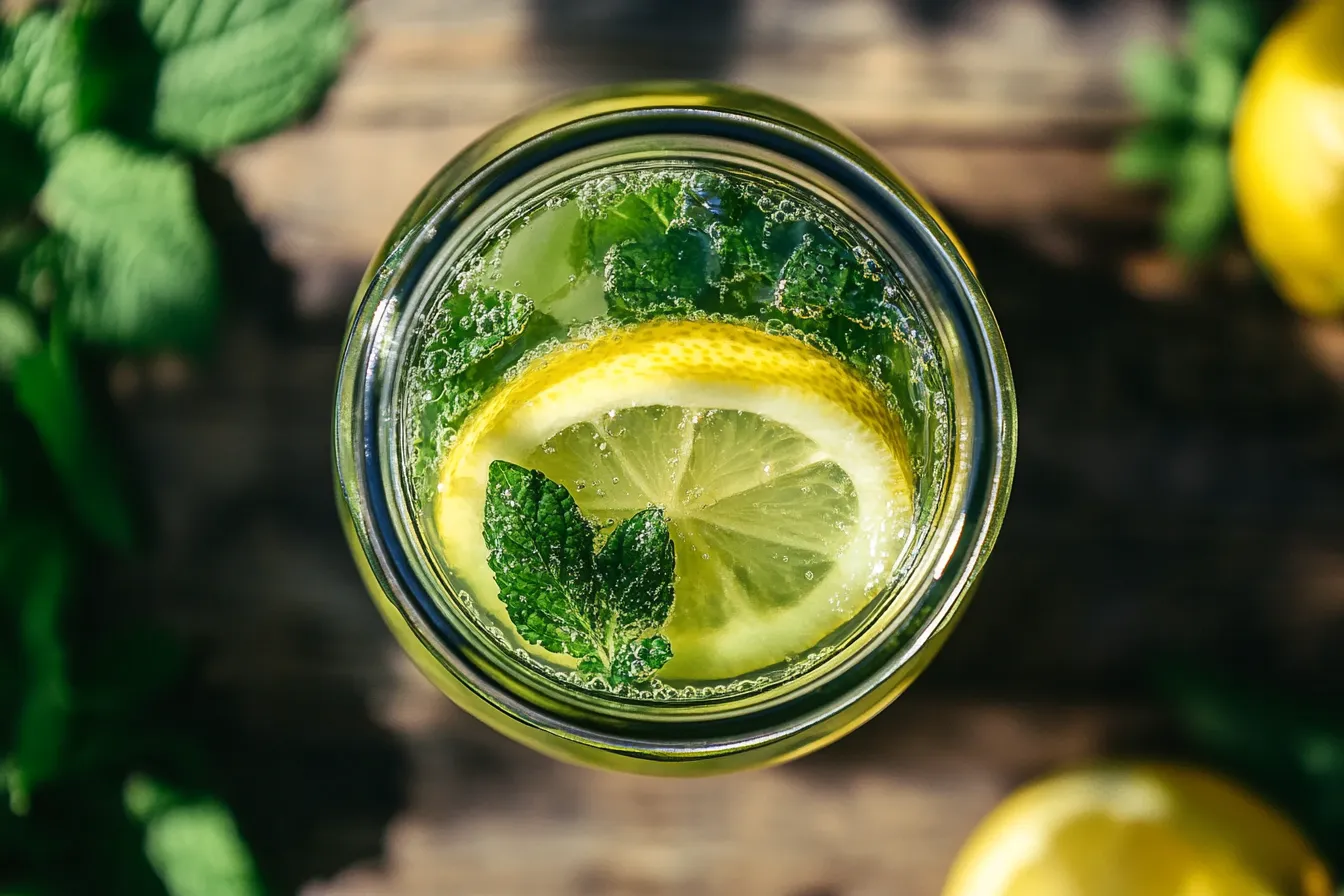Introduction
Lemon balm isn’t just a fragrant herb you plant for its pretty leaves or to attract bees. It’s a treasure trove of wellness and flavor, hiding in plain sight in many herb gardens. If you’ve ever wondered what to do with that leafy bunch of lemon balm growing in your backyard—or found it at the farmer’s market and didn’t know how to use it—you’re not alone.
Lemon balm recipes have gained massive popularity thanks to their refreshing citrusy zing, subtle minty undertone, and health-boosting properties. Whether you’re crafting a summer lemonade, a warm calming tea, or a herbal-infused syrup for cocktails and desserts, lemon balm offers something extraordinary. In this article, we’ll dive deep into some easy, healthy, and delicious lemon balm recipes that anyone can prepare at home—plus tips, variations, and ideas for storing and preserving this versatile herb.
So grab your sprigs, get your lemon juice ready, and let’s explore everything there is to love about cooking and creating with lemon balm..Pulse Mojito
What is Lemon Balm?
Origins & Botanical Profile
Lemon balm (Melissa officinalis) is a member of the mint family, prized for its bright lemony scent and flavor. Native to southern Europe and the Mediterranean, this perennial herb has been cultivated since ancient times—not just for culinary purposes but also for medicinal use. Its soft green leaves and mild citrus aroma make it a favorite in both herbal remedies and modern recipes.
Unlike other mints, lemon balm doesn’t overpower dishes. Instead, it adds a refreshing, smooth citrus note that complements drinks, syrups, and desserts beautifully. It’s also often grown as a companion plant for pollinator gardens due to its ability to attract bees—hence the name “Melissa,” which means “honeybee” in Greek.
Health Benefits Overview
Lemon balm has long been used in traditional medicine for its calming and healing effects. Here are some of its most noteworthy benefits:
- Stress & Anxiety Relief: Lemon balm is widely known for its relaxing properties, often used in teas to calm nerves and ease mild anxiety.
- Digestive Aid: Its antispasmodic qualities help soothe the digestive tract, relieve bloating, and support healthy digestion.
- Improved Sleep: Often combined with valerian or chamomile, lemon balm can improve sleep quality naturally.
- Cognitive Function: Some studies suggest lemon balm may help enhance memory and concentration.
- Antiviral & Antioxidant Properties: It’s rich in polyphenols and antioxidants that help protect cells and fight inflammation.
While these benefits are impressive, using lemon balm in your daily diet through delicious recipes is one of the easiest and most enjoyable ways to experience them..Surfside Lemonade
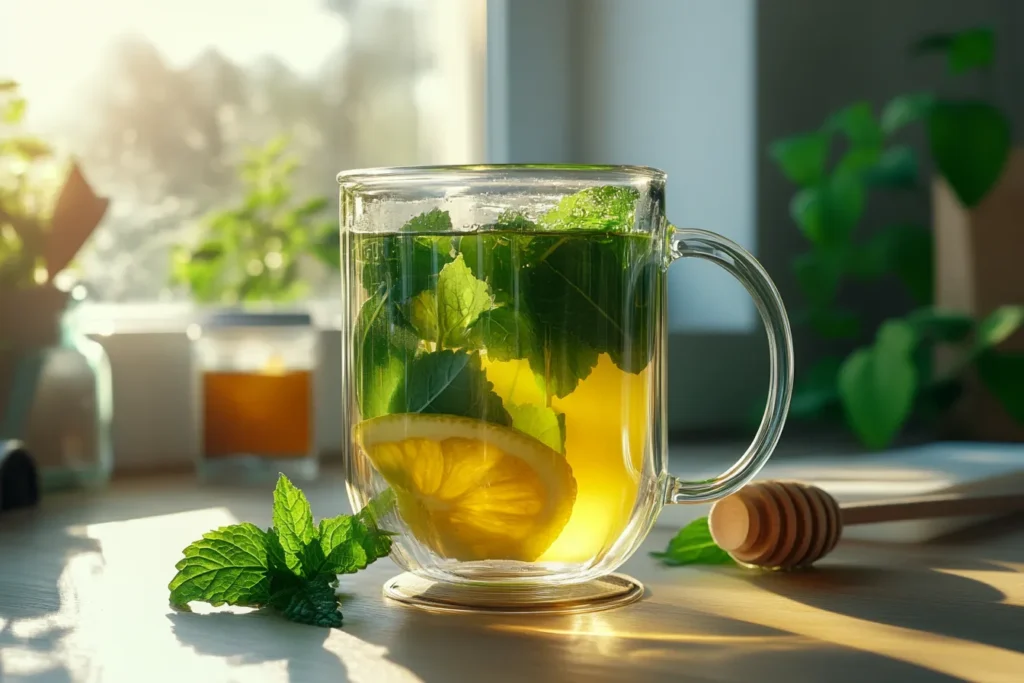
Why Lemon Balm Recipes Are Popular
Flavor Profile and Versatility
The appeal of lemon balm in cooking comes down to its unique, balanced flavor. Unlike lemon zest or juice, which can be overly tart, lemon balm has a smooth, mellow citrus taste with a subtle mint background. This makes it perfect for delicate recipes that need a lift of brightness without overwhelming acidity.
From teas to syrups, marinades, and even baked goods, lemon balm slips into recipes where traditional lemon might be too sharp. It pairs well with honey, ginger, lavender, and green teas, making it ideal for herbal infusions and light desserts.
Nutritional & Wellness Perks
Aside from flavor, lemon balm brings impressive nutritional benefits:
- Low in calories, making it ideal for infusions and detox drinks.
- Rich in rosmarinic acid, a potent antioxidant.
- Contains essential oils like citronellal and geranial that offer calming and antiviral effects.
- Used in natural remedies for cold sores, indigestion, and even mild insomnia.
The rising popularity of lemon balm recipes is largely driven by health-conscious foodies looking to combine flavor and wellness in one go. Whether you’re mixing up a drink or adding fresh herbs to a dessert, lemon balm offers both functionality and taste in one refreshing package.
Classic Lemon Balm Lemonade
There’s nothing quite like a cold glass of homemade lemonade on a hot summer day—unless, of course, it’s lemon balm lemonade. This twist on the traditional drink blends the tartness of lemons with the smooth, citrusy mint notes of lemon balm, creating a refreshing and herbaceous beverage that’s perfect for sipping on the porch, serving at brunch, or cooling off by the pool.
Not only does it taste amazing, but it’s also incredibly easy to make with just a few simple ingredients. Let’s break it down.
Ingredients List
Here’s what you’ll need for about 6–8 servings:
- 1 cup fresh lemon balm leaves (loosely packed)
- 1 cup freshly squeezed lemon juice (about 4–6 lemons)
- 3/4 to 1 cup raw honey or sugar (adjust to taste)
- 6 cups cold water
- 1 cup hot water (for steeping the lemon balm)
- Ice cubes, lemon slices, and mint sprigs (optional for garnish)
Tip: You can substitute honey with agave nectar, stevia, or maple syrup for a different flavor profile.
Step-by-Step Preparation
Step 1: Steep the Lemon Balm
- Rinse the lemon balm leaves and bruise them slightly with your hands to release their essential oils.
- Place them in a heat-proof bowl and pour in 1 cup of hot water (not boiling).
- Cover and let steep for 15–20 minutes. The water will turn pale green and smell deliciously citrusy.
- Strain and discard the leaves, reserving the infused liquid.
Step 2: Make the Lemon Base
- While the lemon balm is steeping, squeeze your fresh lemons and remove any seeds.
- Pour the lemon juice into a large pitcher.
Step 3: Sweeten the Mix
- Add honey or sugar to the warm lemon balm infusion so it dissolves completely.
- If using honey, warm water helps it blend more easily than cold.
Step 4: Combine Everything
- Pour the sweetened lemon balm infusion into the pitcher with the lemon juice.
- Add 6 cups of cold water, and stir well.
Step 5: Chill and Serve
- Refrigerate for at least an hour before serving, or serve immediately over ice.
- Garnish with lemon slices, mint sprigs, or a few floating lemon balm leaves for a rustic presentation.
Serving Suggestions
This lemon balm lemonade is so versatile you can:
- Serve it chilled in mason jars for a garden party.
- Add sparkling water for a fizzy version.
- Infuse with fresh ginger or cucumber for extra zest.
- Pair with light appetizers like bruschetta or fruit salads.
It’s also a great non-alcoholic drink for kids, with the added bonus of being packed with soothing and immune-boosting benefits.
Pro Tip: For a grown-up twist, add a splash of vodka or gin to turn this into a garden-inspired cocktail!
Bonus Section: Quick Nutritional Benefits of Lemon Balm Lemonade
| Nutrient | Benefit |
|---|---|
| Vitamin C | Boosts immunity, skin health |
| Antioxidants | Fights inflammation |
| Herbal oils | Natural calming effect |
| Honey | Antibacterial and soothing |
By combining lemon juice with fresh lemon balm, you’re not just making a tasty beverage—you’re creating a wellness drink with real benefits.
(Recommended Anchor: “classic herbal lemonade”)
For more inspiration, check out the original classic herbal lemonade recipe from Food.com.
Lemon Balm Herbal Tea
If you love calm, cozy moments or need something soothing to sip before bed, a warm cup of lemon balm herbal tea may be just what you need. This gentle, aromatic tea has long been used to support relaxation, digestion, and sleep. But it’s not just for winter nights—it also makes a fabulous iced tea variation for hot days.
Lemon balm tea is one of the simplest and healthiest recipes you can make with this herb. No caffeine. No additives. Just pure plant power.
Hot Lemon Balm Tea Recipe
Ingredients:
- 1–2 tablespoons fresh lemon balm leaves (or 1 teaspoon dried)
- 1 cup boiling water
- Optional: a slice of lemon, a dash of honey, or chamomile for added relaxation
Instructions:
- Rinse and gently bruise fresh lemon balm leaves to release their oils.
- Place them in a mug or teapot.
- Pour boiling water over the leaves.
- Cover and steep for 7–10 minutes to preserve essential oils.
- Strain and sip slowly. Add honey or lemon if desired.
Pro Tip: Add a few lavender buds or chamomile flowers for a multi-herb infusion that promotes deeper sleep and stress relief.
Iced Lemon Balm Tea Variation
On a hot afternoon, this iced version delivers all the relaxation of hot tea but with a crisp, cooling kick.
Ingredients:
- 4 tablespoons fresh lemon balm leaves (or 2 teaspoons dried)
- 4 cups water
- 1–2 tablespoons honey or maple syrup
- Lemon slices and ice (optional)
Instructions:
- Bring 2 cups of water to a boil, then remove from heat.
- Add lemon balm and let steep, covered, for 15–20 minutes.
- Strain the liquid into a pitcher.
- Stir in honey or sweetener while still warm.
- Add 2 more cups of cold water and refrigerate until chilled.
- Serve over ice with lemon wheels or a sprig of fresh mint.
Flavor Boost: Try combining lemon balm with mint, basil, or fruit slices like strawberries or blueberries for a fruity twist.
Health Benefits of Lemon Balm Tea
| Benefit | Details |
|---|---|
| Stress Relief | Natural calming agent, lowers cortisol levels |
| Digestive Aid | Reduces bloating, gas, and cramps |
| Better Sleep | Helps with insomnia when consumed before bed |
| Mental Clarity | Mild mood-enhancer, may improve memory |
| Immune Boost | Antioxidant properties support overall health |
What sets lemon balm tea apart is how gentle it is—safe enough for kids and ideal for people trying to reduce caffeine without sacrificing taste or warmth.
Did You Know? Lemon balm is often used in traditional European herbal remedies for easing colic and digestive troubles in children.
When and How to Enjoy Lemon Balm Tea
- Morning: Kickstart your day with a mild mood booster.
- Afternoon: A great non-caffeinated pick-me-up.
- Before Bed: Calm your mind and body for restful sleep.
- After Meals: Soothe your digestive system naturally.
Whether you prefer it warm in winter or chilled in summer, this herbal tea is as flexible as it is beneficial.
(Recommended Anchor: “herbal medicine benefits of lemon balm”)
Learn more about the herbal medicine benefits of lemon balm from Healthline, including scientific studies on its stress-reducing and antiviral effects.
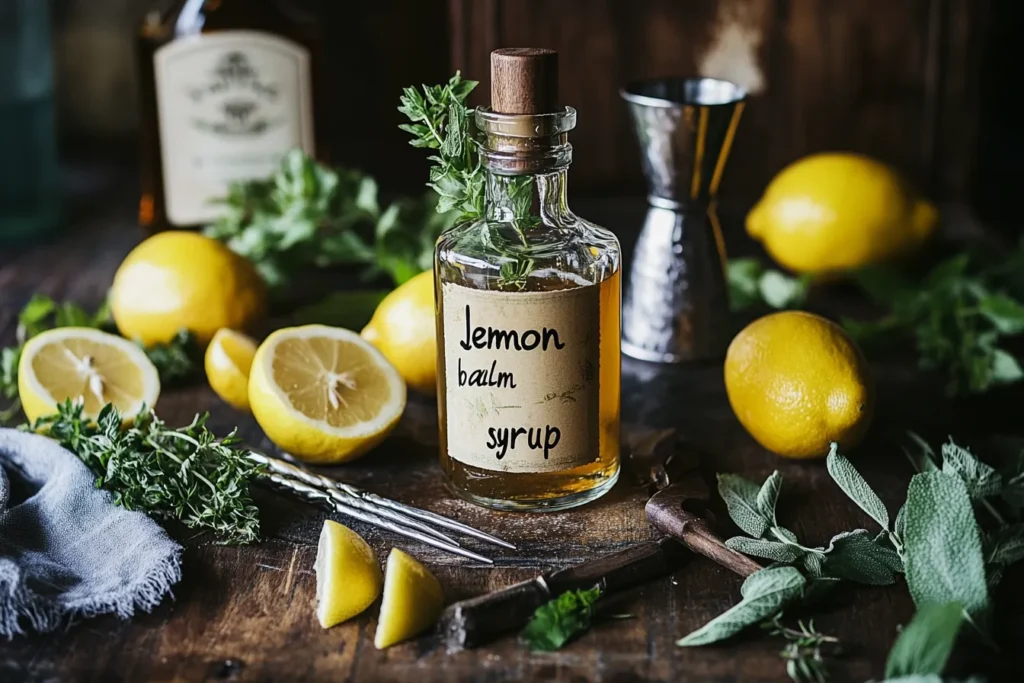
Lemon Balm Syrup for Cocktails & Mocktails
If you’re ready to take your herbal creations to the next level, lemon balm syrup is your go-to infusion. Whether you’re crafting a craft cocktail, elevating a mocktail, or sweetening desserts or iced tea, this versatile syrup adds a soft, citrusy herbal twist with incredible aroma and taste.
Lemon balm syrup stores well and can be used in dozens of ways. It’s the kind of DIY kitchen staple that transforms ordinary drinks into garden-inspired delights.
How to Make Lemon Balm Syrup
This simple syrup recipe requires just three ingredients and can be made in under 30 minutes.
Ingredients:
- 1 cup fresh lemon balm leaves, lightly chopped
- 1 cup sugar (or substitute with honey or agave)
- 1 cup water
Instructions:
- Combine water and sugar in a saucepan over medium heat. Stir until sugar dissolves.
- Add the lemon balm leaves and bring the mixture to a light simmer.
- Simmer for 10–15 minutes, then remove from heat.
- Let steep for another 15–20 minutes to intensify flavor.
- Strain through a fine mesh sieve into a clean jar or bottle.
- Cool completely and store in the refrigerator for up to 2 weeks.
Pro Tip: For stronger herbal flavor, let the syrup steep longer before straining—up to 1 hour for a deep infusion.
Creative Ways to Use Lemon Balm Syrup
1. Cocktails:
- Lemon Balm Mojito: Replace mint syrup with lemon balm syrup for a smoother, citrus-mint flavor.
- Herbal Gin Fizz: Mix gin, club soda, lemon juice, and lemon balm syrup for a botanical cocktail.
- Whiskey Sour Twist: Use lemon balm syrup instead of plain sugar syrup to balance the tartness of lemon.
2. Mocktails:
- Cucumber Lemon Balm Cooler: Combine cucumber slices, sparkling water, and a splash of syrup for a spa-like drink.
- Lavender Lemon Balm Sparkler: Mix a touch of lavender essence with lemon balm syrup and soda water.
3. Iced Beverages:
- Add to iced tea, lemonade, or fruit punches for added herbal complexity.
4. Desserts & Baking:
- Drizzle over cakes, muffins, or pancakes.
- Brush on sponge layers in trifles or tarts.
- Use in whipped cream or yogurt parfaits for subtle citrus sweetness.
Storage Tips
- Refrigerator Life: Lasts up to 2 weeks in a sealed glass container.
- Freezer Option: Pour into ice cube trays and freeze for up to 2 months.
- Sterile Bottling: For long-term storage, use sterilized glass bottles and refrigerate.
Did You Know? Homemade herbal syrups like this one can also be used as natural remedies for sore throats or digestive discomfort.
Bonus: Lemon Balm Sugar Scrub (DIY Beauty Tip)
Here’s a fun, non-edible use for lemon balm syrup: mix it with sugar and olive oil for a natural body scrub!
Ingredients:
- 1/2 cup sugar
- 2 tbsp lemon balm syrup
- 2 tbsp olive or coconut oil
How to Use:
Massage gently onto damp skin, rinse, and enjoy soft, citrus-scented skin. Great for gifts or spa nights!
(Recommended Anchor: “lemonade variations and herb infusions”)
Explore this guide on lemonade variations and herb infusions from Epicurious for more ways to blend herbs like lemon balm into drinks.
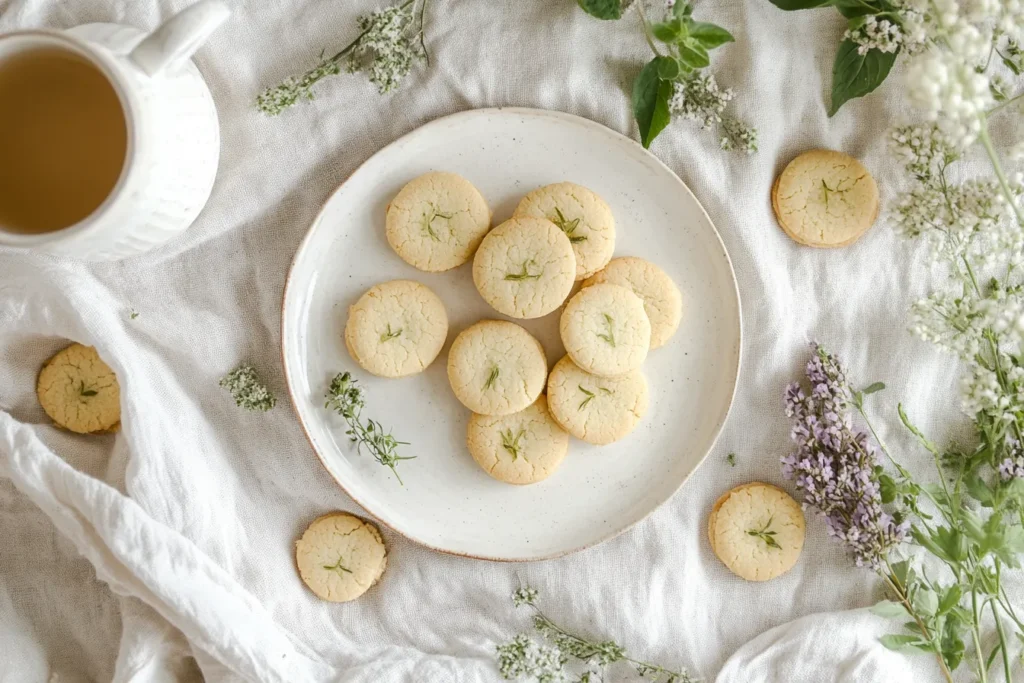
Lemon Balm in Desserts
While lemon balm shines in drinks, it’s equally impressive in the dessert world. Its gentle citrusy flavor is perfect for elevating sweets without overpowering them. From buttery cookies to cakes and even homemade sugar blends, lemon balm offers endless dessert possibilities that blend comfort and creativity.
Let’s explore a couple of easy, delicious dessert recipes and ideas where lemon balm adds a special touch.
Lemon Balm Cookies
These soft, melt-in-your-mouth cookies offer just the right hint of lemon and herb. Think lemon shortbread with a botanical twist.
Ingredients:
- 1 cup unsalted butter, softened
- 3/4 cup powdered sugar
- 2 cups all-purpose flour
- 1/4 tsp salt
- 2 tbsp finely chopped fresh lemon balm leaves
- 1 tsp vanilla extract
- Optional: zest of 1 lemon
Instructions:
- Cream butter and sugar until fluffy.
- Add vanilla and lemon zest, then fold in chopped lemon balm leaves.
- Stir in flour and salt until just combined.
- Roll dough into a log, wrap in plastic, and chill for 30–60 minutes.
- Slice into 1/4-inch rounds and place on a baking sheet.
- Bake at 350°F (175°C) for 10–12 minutes or until edges are lightly golden.
Flavor Booster: Dust with powdered sugar or dip half in white chocolate for an elegant finish.
Other Lemon Balm Dessert Ideas
1. Lemon Balm Infused Cream:
Steep fresh lemon balm in cream for 20 minutes, strain, then use in panna cotta, custard, or whipped topping.
2. Lemon Balm Sorbet:
Infuse your simple syrup with lemon balm before blending with lemon juice and freezing. Fresh, herbal, and ideal for hot weather.
3. Lemon Balm & Honey Yogurt Parfaits:
Layer honey-sweetened Greek yogurt, granola, and chopped lemon balm for a refreshing and healthy treat.
4. Lemon Balm Sugar:
Dry lemon balm leaves and grind them with sugar. Use this aromatic sugar in baking, dusting over scones, or rimming cocktail glasses.

Tips & Variations
Let’s make your lemon balm recipes even more adaptable with helpful substitutions, sweetener swaps, and storage advice.
Sweetener Swaps
While many recipes call for sugar or honey, you can easily tailor your lemon balm creations with alternative sweeteners:
| Sweetener | Best Use | Notes |
|---|---|---|
| Agave Nectar | Lemonade, syrups | Smooth and light |
| Maple Syrup | Tea, desserts | Rich flavor with depth |
| Stevia | Iced tea | Low-calorie option |
| Coconut Sugar | Cookies, syrups | Slight caramel note |
Using Fresh vs Dried Lemon Balm
Both forms have their place depending on the recipe:
| Type | Flavor | Best For |
|---|---|---|
| Fresh | Vibrant, citrusy | Drinks, desserts, garnishes |
| Dried | More concentrated | Herbal teas, syrups, baking |
Tip: Use half the amount when substituting dried lemon balm for fresh in any recipe.
Storage & Shelf Life
Keep your lemon balm fresh and flavorful with these storage tips:
Fresh Lemon Balm:
- Wrap in a damp paper towel and place in a ziplock bag.
- Store in the fridge for up to 7 days.
Dried Lemon Balm:
- Store in an airtight container away from sunlight.
- Keeps for up to 6 months with proper storage.
Frozen Lemon Balm:
- Chop and place in ice cube trays with water or olive oil.
- Freeze and use in soups, teas, or marinades.
Creative Garnishing Ideas:
- Use whole leaves to top lemon tarts, cakes, or cupcakes.
- Blend into frosting or glaze for a subtly herbal accent.
- Combine with mint and basil for an elegant dessert bouquet.
Frequently Asked Questions
Can you use dried lemon balm in recipes?
Absolutely! Dried lemon balm works well in teas, syrups, and baked goods. However, because drying concentrates the flavor, you should use half the amount compared to fresh leaves. While fresh is best for garnish and lemonade, dried lemon balm is perfect for long infusions and spice blends.
Is lemon balm safe for children and pregnant women?
Lemon balm is generally considered safe in small culinary amounts for both children and adults. It’s often used in natural remedies for kids due to its gentle sedative effects. However, pregnant or breastfeeding women should consult with a healthcare professional before consuming large quantities or medicinal doses.
How long does homemade lemon balm lemonade last?
Stored in a sealed glass container in the fridge, lemon balm lemonade stays fresh for up to 4–5 days. The flavors may deepen after the first day. If you add fresh herbs or fruit slices, remove them after 24 hours to prevent bitterness.
Can I grow lemon balm at home?
Yes! Lemon balm is easy to grow in pots or garden beds. It prefers partial sun, moist soil, and regular trimming. Once established, it’s a hardy perennial that can produce leaves from spring through early fall.
How do I preserve lemon balm for later use?
You can preserve lemon balm by drying, freezing, or turning it into syrups and tinctures. For drying, hang small bunches upside down in a cool, dry space. For freezing, chop and store in ice cube trays with water.
What other herbs pair well with lemon balm?
Lemon balm pairs beautifully with:
- Mint – for fresh tea and lemonade blends
- Lavender – in desserts and sleep teas
- Thyme – for savory dishes and herb-infused syrups
- Basil – especially in mocktails and infused waters
Conclusion
From its soothing scent to its culinary versatility, lemon balm is one of the most underappreciated herbs in the kitchen. Whether you’re steeping it into a calming tea, stirring it into fresh lemonade, or whisking it into cookie dough, lemon balm recipes offer a delightful combination of taste and wellness.
What makes lemon balm so special is that it’s not just flavorful—it’s functional. Each recipe adds value to your health while keeping things naturally sweet and fresh. So the next time you’re in your garden or browsing herbs at the market, don’t pass by this leafy gem.
Embrace its herbal charm, experiment with your own lemon balm recipes, and enjoy every sip, bite, or sprinkle of this garden treasure.
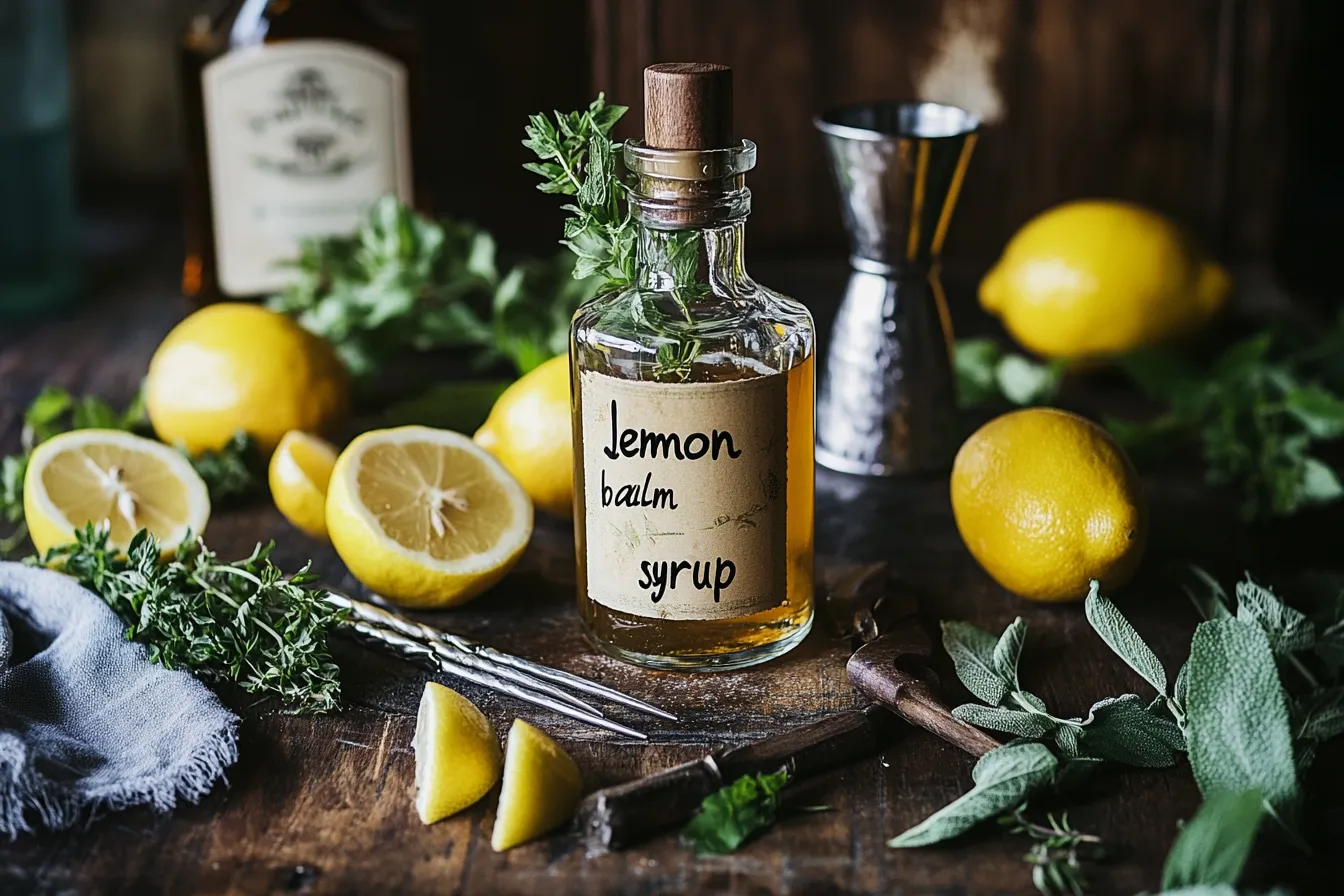
Name: Lemon Balm Lemonade
Ingredients
Equipment
Method
- Instructions:
- Steep the Lemon Balm:
- Lightly bruise the lemon balm leaves to release oils. Place in a bowl and pour 1 cup of hot water over them. Cover and steep for 15–20 minutes. Strain and discard leaves.
- Prepare the Lemon Base:
- Juice the lemons, removing seeds, and pour the juice into a large pitcher.
- Sweeten:
- Stir the honey or sugar into the warm lemon balm infusion until dissolved.
- Combine:
- Pour the sweetened infusion into the pitcher with lemon juice. Add 6 cups of cold water and stir.
- Chill & Serve:
- Refrigerate for 1–2 hours or serve immediately over ice. Garnish as desired.

